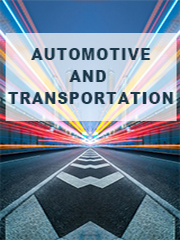Report overview
Artificial leather is a material intended to substitute for leather in fields such as upholstery, clothing, footwear and fabrics and other uses where a leather-like finish is desired but the actual material is cost-prohibitive or unsuitable.
Polyvinylchloride (PVC), also commonly referred to as vinyl, is essentially a flexible plastic made from PVC resin, various fillers, and additives such as plasticizers to manipulate its softness, color and texture. Once the desired fillers have been added, PVC is used to coat one side of a knit or woven fabric backing and sometimes a center layer of foam.
PVC resin as raw materials to produce artificial leather called PVC artificial leather (referred to as artificial leather).
This report aims to provide a comprehensive presentation of the global market for Automotive PVC Artificial Leather, with both quantitative and qualitative analysis, to help readers develop business/growth strategies, assess the market competitive situation, analyze their position in the current marketplace, and make informed business decisions regarding Automotive PVC Artificial Leather. This report contains market size and forecasts of Automotive PVC Artificial Leather in global, including the following market information:
Global Automotive PVC Artificial Leather Market Revenue, 2018-2023, 2024-2029, ($ millions)
Global Automotive PVC Artificial Leather Market Sales, 2018-2023, 2024-2029, (M Sqm)
Global top five Automotive PVC Artificial Leather companies in 2022 (%)
The global Automotive PVC Artificial Leather market was valued at US$ 1252.2 million in 2022 and is projected to reach US$ 1392.8 million by 2029, at a CAGR of 1.5% during the forecast period. The influence of COVID-19 and the Russia-Ukraine War were considered while estimating market sizes.
Global Automotive PVC Artificial Leather key players include Benecke-Kaliko, Kyowa Leather Cloth, CGT, etc. Global top three manufacturers hold a share over 60%.
Europe is the largest market, with a share about 35%, followed by China and North America, both have a share about 35 percent.
In terms of product, Seats is the largest segment, with a share over 50%. And in terms of application, the largest application is Passenger Vehicle, followed by Commercial Vehicle.
We surveyed the Automotive PVC Artificial Leather manufacturers, suppliers, distributors and industry experts on this industry, involving the sales, revenue, demand, price change, product type, recent development and plan, industry trends, drivers, challenges, obstacles, and potential risks.
Total Market by Segment:
Global Automotive PVC Artificial Leather Market, by Type, 2018-2023, 2024-2029 ($ Millions) & (M Sqm)
Global Automotive PVC Artificial Leather Market Segment Percentages, by Type, 2022 (%)
Seats
Door Panel
Instrument Panel
Consoles
Other
Global Automotive PVC Artificial Leather Market, by Application, 2018-2023, 2024-2029 ($ Millions) & (M Sqm)
Global Automotive PVC Artificial Leather Market Segment Percentages, by Application, 2022 (%)
Passenger Vehicle
Commercial Vehicle
Global Automotive PVC Artificial Leather Market, By Region and Country, 2018-2023, 2024-2029 ($ Millions) & (M Sqm)
Global Automotive PVC Artificial Leather Market Segment Percentages, By Region and Country, 2022 (%)
North America
US
Canada
Mexico
Europe
Germany
France
U.K.
Italy
Russia
Nordic Countries
Benelux
Rest of Europe
Asia
China
Japan
South Korea
Southeast Asia
India
Rest of Asia
South America
Brazil
Argentina
Rest of South America
Middle East & Africa
Turkey
Israel
Saudi Arabia
UAE
Rest of Middle East & Africa
Competitor Analysis
The report also provides analysis of leading market participants including:
Key companies Automotive PVC Artificial Leather revenues in global market, 2018-2023 (Estimated), ($ millions)
Key companies Automotive PVC Artificial Leather revenues share in global market, 2022 (%)
Key companies Automotive PVC Artificial Leather sales in global market, 2018-2023 (Estimated), (M Sqm)
Key companies Automotive PVC Artificial Leather sales share in global market, 2022 (%)
Further, the report presents profiles of competitors in the market, key players include:
Benecke-Kaliko
Kyowa Leather Cloth
CGT
Vulcaflex
Scientex Berhad
Archilles
Mayur Uniquoters
Fujian Polyrech Technology
Wise Star
MarvelVinyls
Super Tannery Limited
Jiangsu Zhongtong Auto Interior Material
HR Polycoats
Longyue Leather
Wellmark
Veekay Polycoats
Xiefu Group
Outline of Major Chapters:
Chapter 1: Introduces the definition of Automotive PVC Artificial Leather, market overview.
Chapter 2: Global Automotive PVC Artificial Leather market size in revenue and volume.
Chapter 3: Detailed analysis of Automotive PVC Artificial Leather manufacturers competitive landscape, price, sales and revenue market share, latest development plan, merger, and acquisition information, etc.
Chapter 4: Provides the analysis of various market segments by type, covering the market size and development potential of each market segment, to help readers find the blue ocean market in different market segments.
Chapter 5: Provides the analysis of various market segments by application, covering the market size and development potential of each market segment, to help readers find the blue ocean market in different downstream markets.
Chapter 6: Sales of Automotive PVC Artificial Leather in regional level and country level. It provides a quantitative analysis of the market size and development potential of each region and its main countries and introduces the market development, future development prospects, market space of each country in the world.
Chapter 7: Provides profiles of key players, introducing the basic situation of the main companies in the market in detail, including product sales, revenue, price, gross margin, product introduction, recent development, etc.
Chapter 8: Global Automotive PVC Artificial Leather capacity by region & country.
Chapter 9: Introduces the market dynamics, latest developments of the market, the driving factors and restrictive factors of the market, the challenges and risks faced by manufacturers in the industry, and the analysis of relevant policies in the industry.
Chapter 10: Analysis of industrial chain, including the upstream and downstream of the industry.
Chapter 11: The main points and conclusions of the report.
